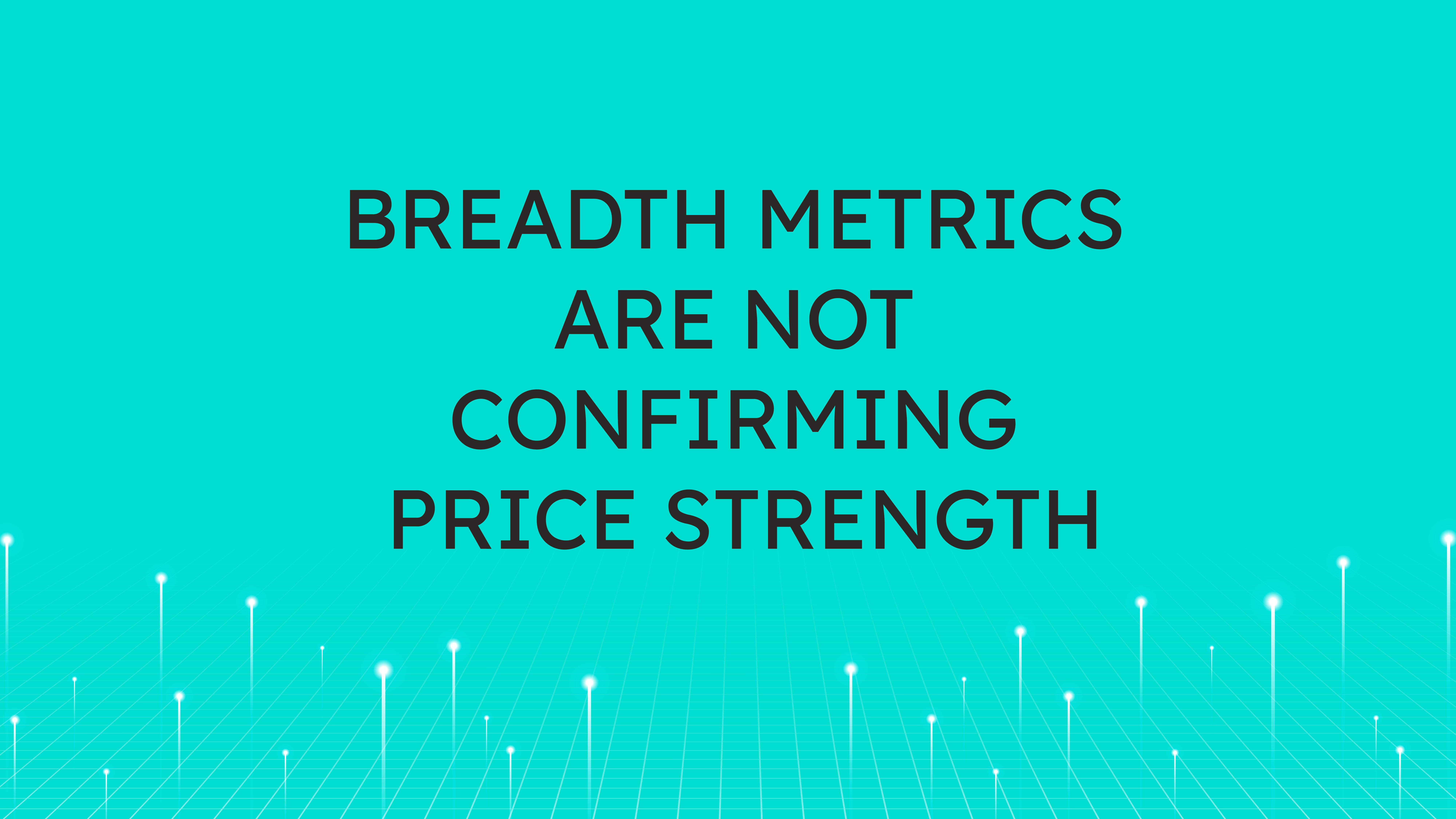
Key Points
- Equal Weighted S&P 500 Fades Further vs. Cap Weighted Index
- Increasing New Lows on the NYSE
- Long-Term Metrics are Strong but Off Their Best Levels
- Short-Term Metrics See the Most Damage
- Watching Key Support Levels Following Divergences
Chart in Focus:
The S&P 500 Equal Weighted Index relative to the S&P 500 continues to fade from resistance at the 2012 lows and has fallen further below the 50-day moving average. As we pointed out last week, this is a sign that leadership is beginning to concentrate in the larger names within the S&P 500. The 14-day RSI of the ratio is nearing oversold levels after making lower highs.
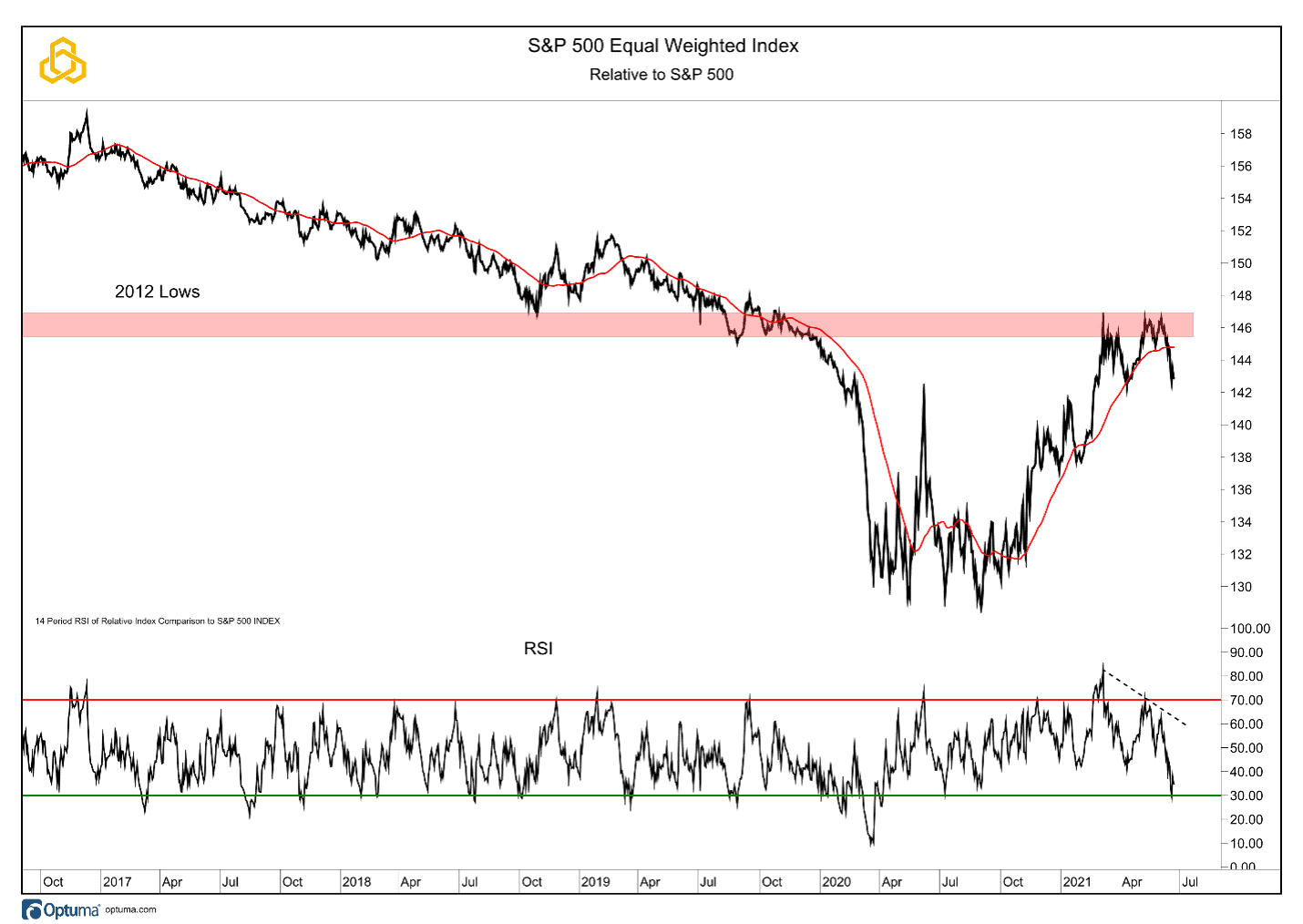
NYSE Breadth
The Advance/Decline for the NYSE remains just below record levels, a dynamic that is like that of the S&P 500 itself. The 50-day moving average for the indicator and the index continues to rise and has acted as support in both instances. This measure of breadth has weakened in the near-term but has not broken down yet.
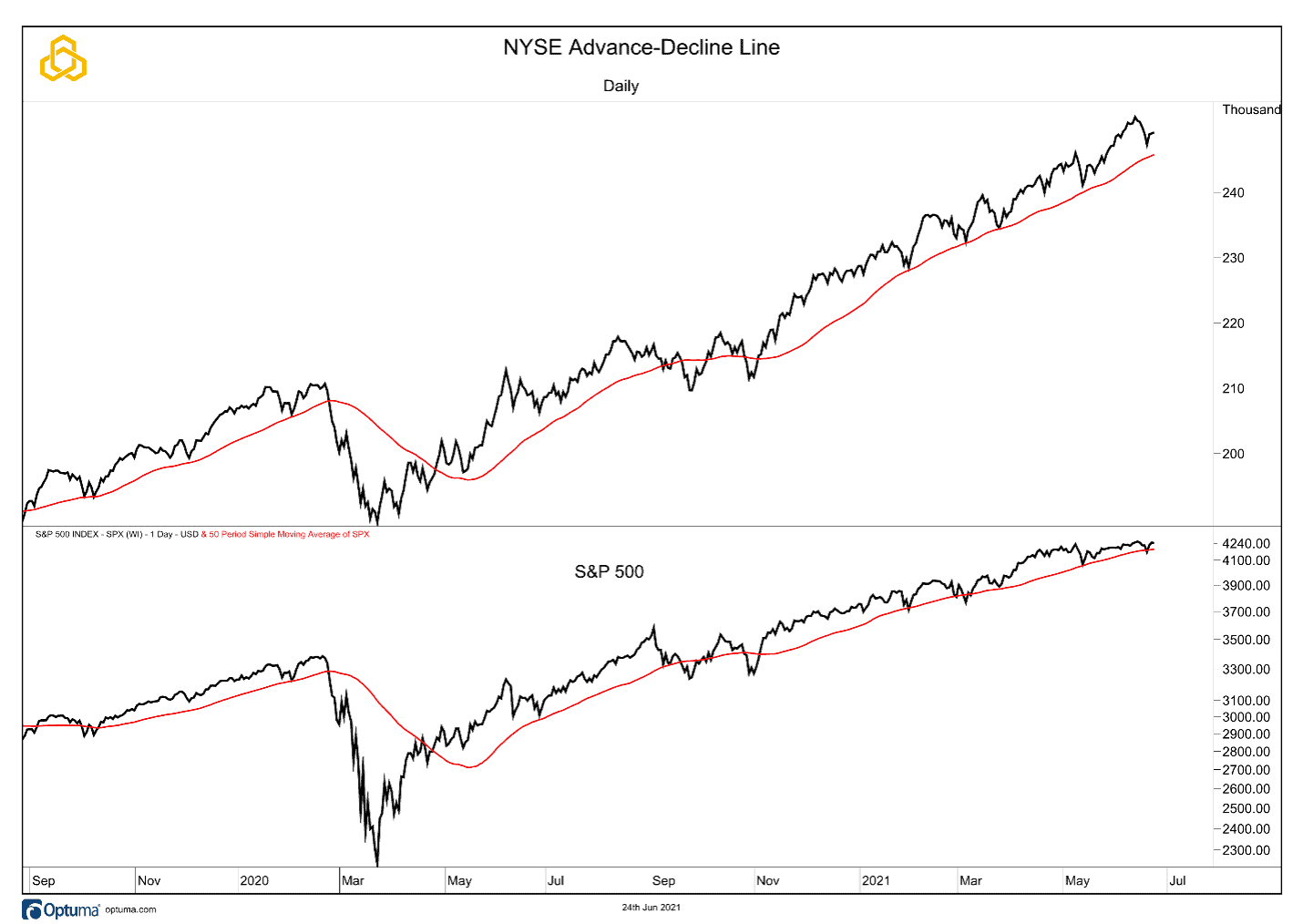
The NYSE’s Advancing – Declining Volume indictor has once again found support at the rising 50-day moving average after pulling back from record levels. A break of the moving average would be a cause for concern. We are watching closely.
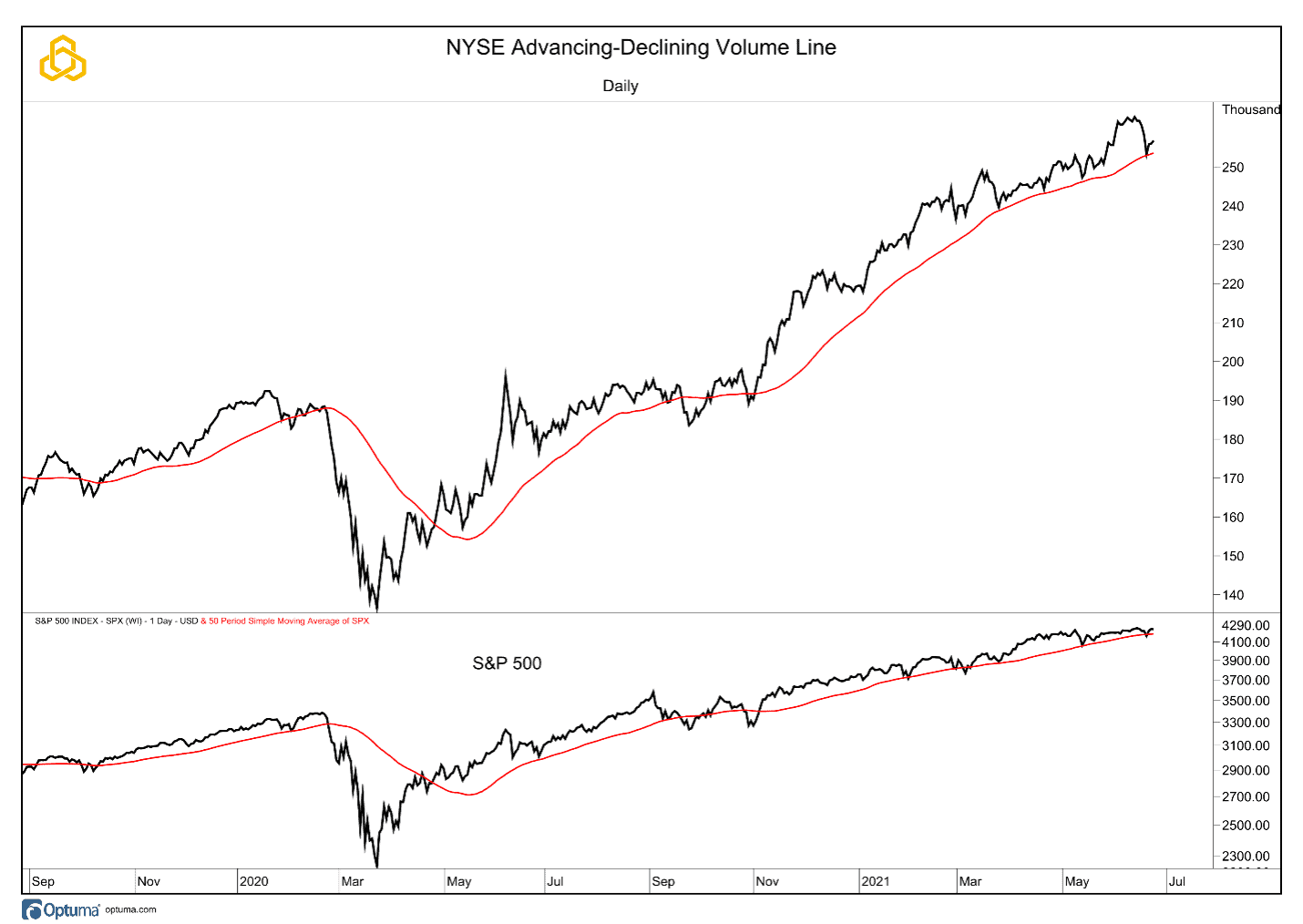
Last week we pointed out a slight uptick in the percentage of issues on the NYSE making new 52-week and six-month lows. While the daily data (black line) has rolled over, the increase in new lows can be seen in the 5-day moving averages for each metric. Equity bulls want to see these moving averages quickly reverse and “hug” the bottom of their respective charts.
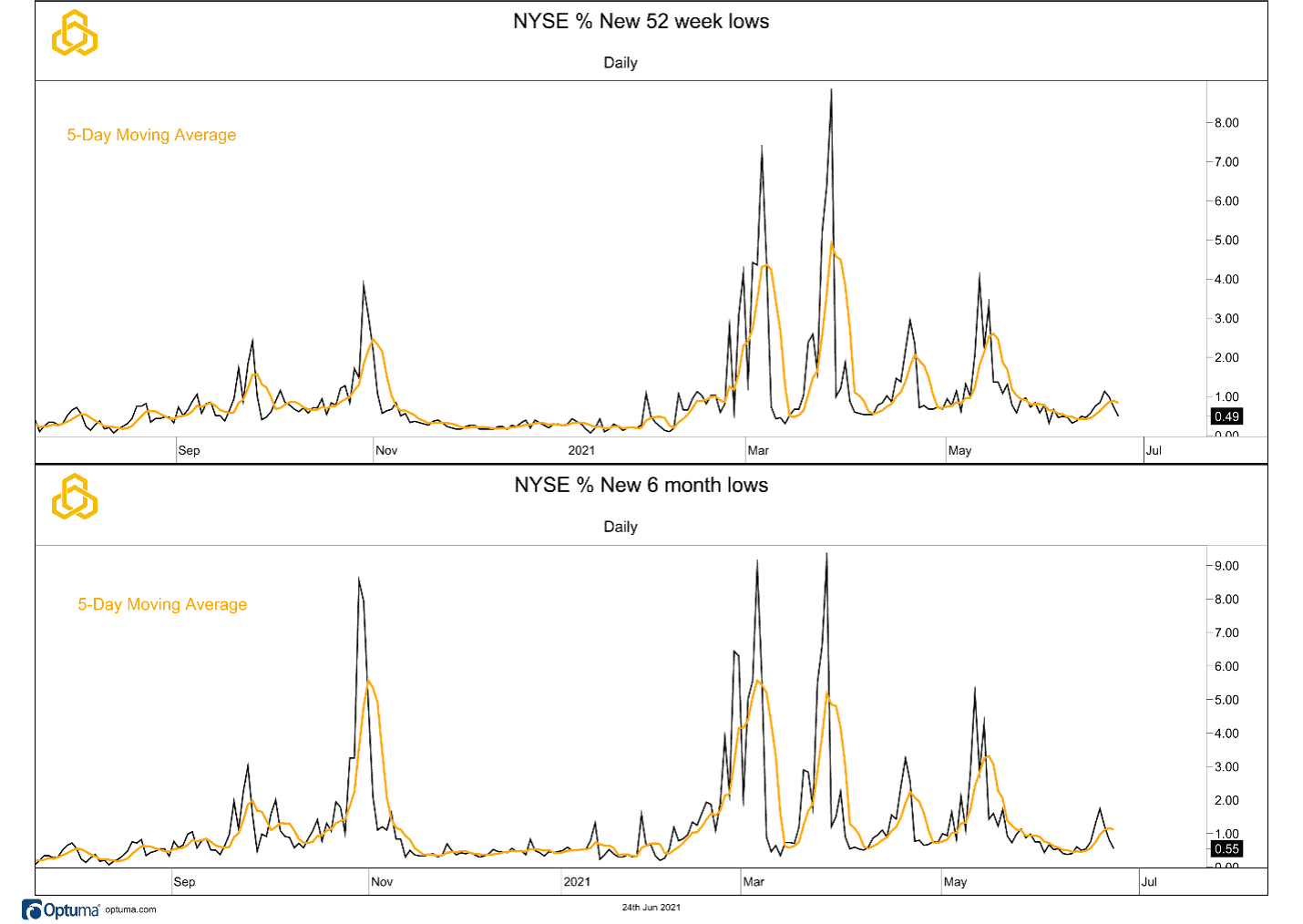
The percentage of issues on the NYSE that are trading above their respective 200-day moving averages continues to hold above support and the 60% level. The bearish argument is that recent highs were not confirmed, as the indicator is making lower highs. While we do have this development on our list of concerns, a divergence is not confirmed until there is a break of price support. The 4,100 level is key for the S&P 500, which remains above its own 200-day moving average.
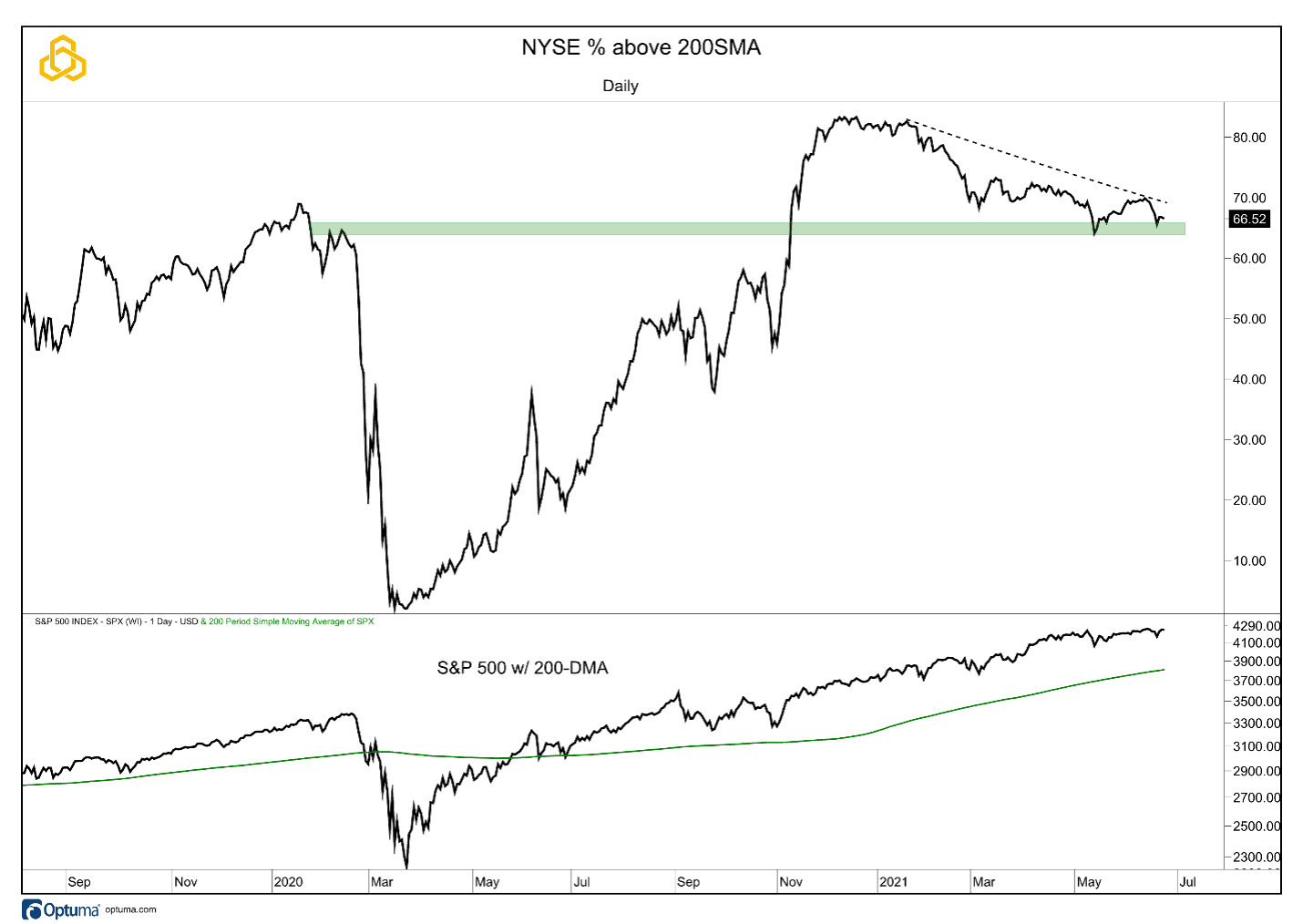
The percentage of issues on the NYSE that are trading above their respective 50-day moving averages has declined over the past week and is now below the 60% mark. Here too, the recent highs for the index were not confirmed. However, the 50-day moving average for the S&P 500 continues to define the trend and has acted as near-term support to weakness.
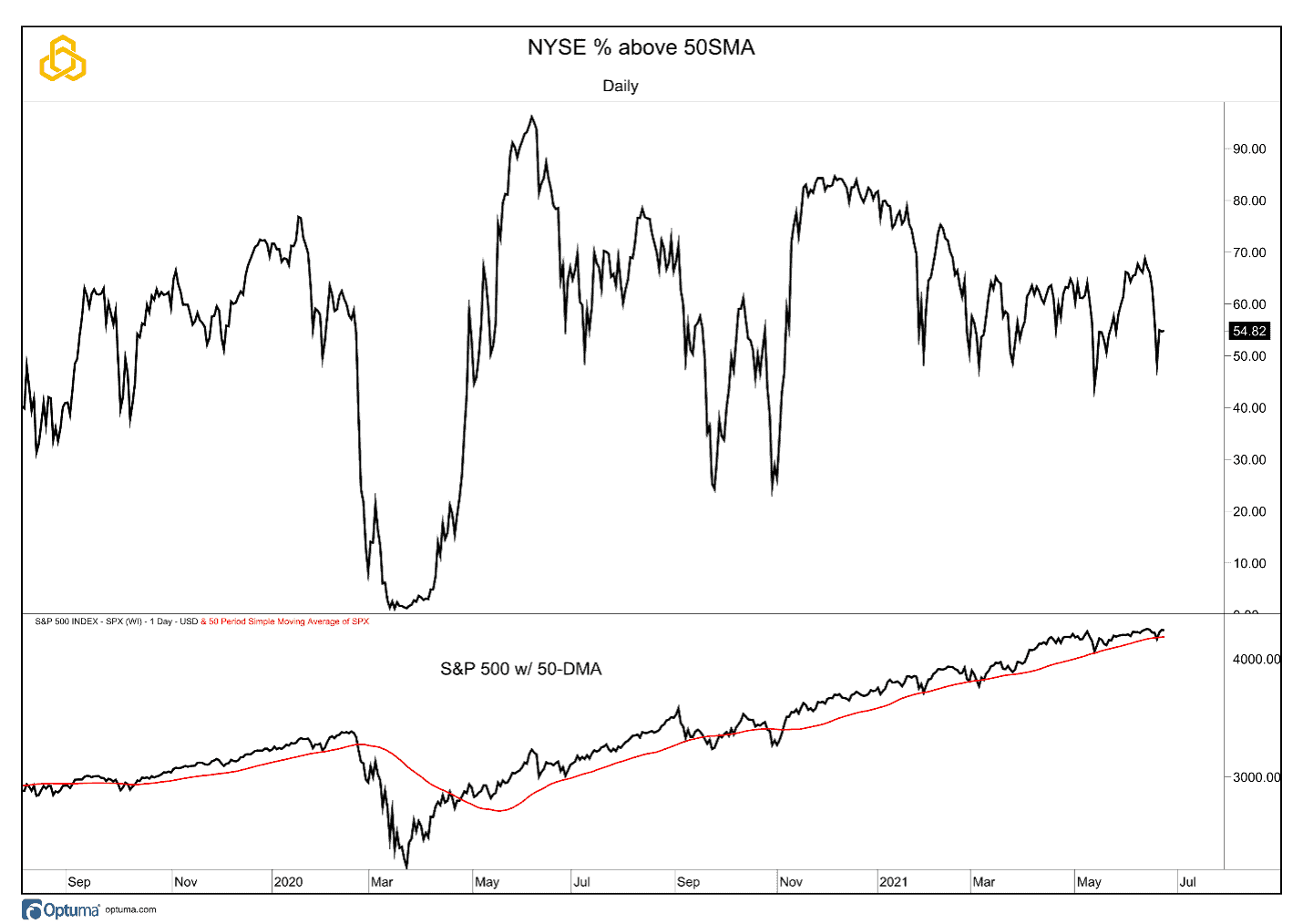
The percentage of NYSE issues trading above their respective 20-day moving averages remains under pressure, crossing below the 50% level this week. After a brief trip below its own 20-day moving average, the S&P 500 has moved back above it.
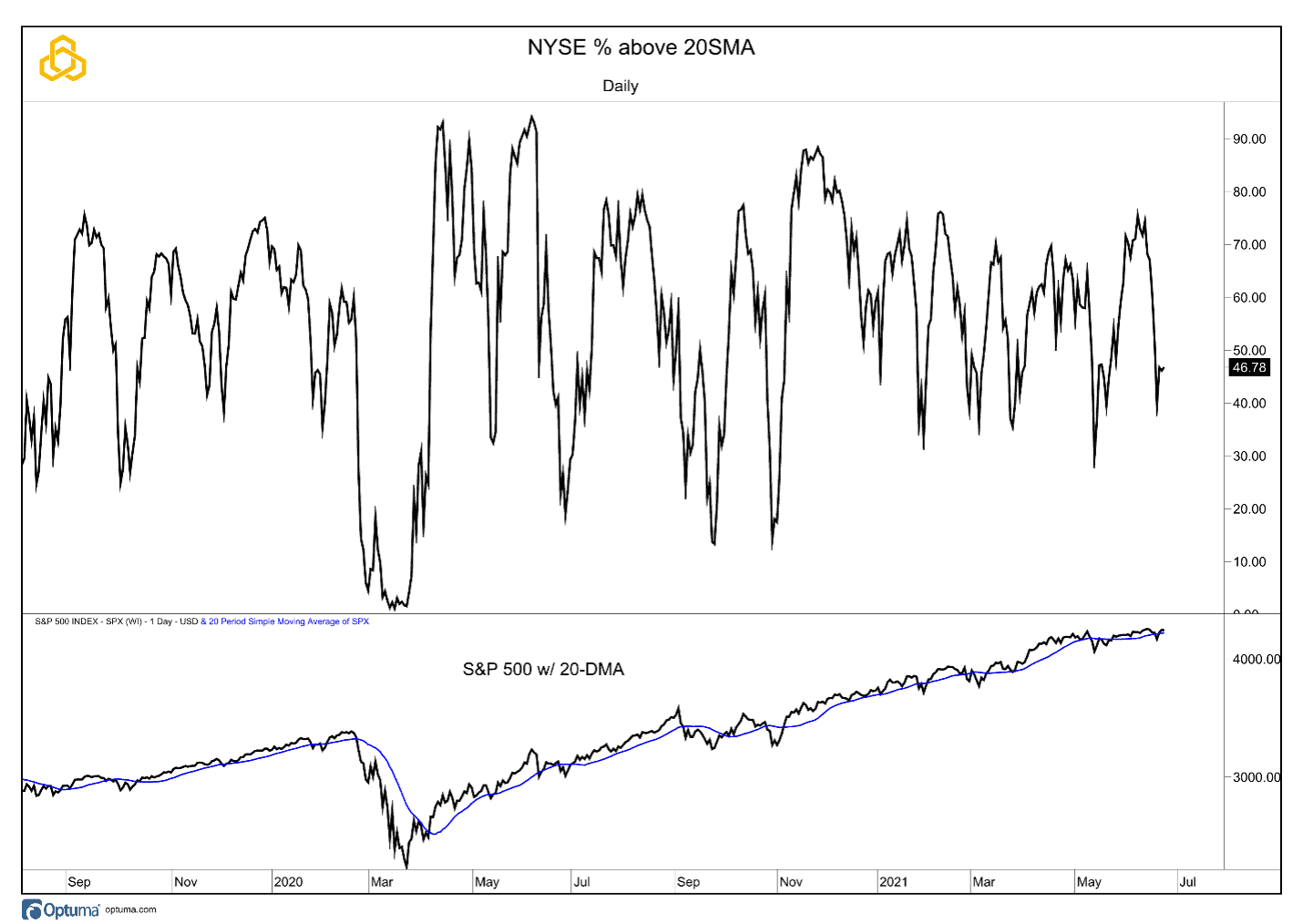
S&P 500 Breadth
Breadth metrics for the S&P 500 have also continued to weaken over the past week. The Advance/Decline Line is now testing its 50-day moving average, which has been support over the past year. The percentage of stocks above their 200-day moving averages is 87.13%, a solid number but down from recent peaks. The percentage above their 50-day moving averages stands at 41.58%, while the percentage below their 20-day moving averages moved down to 33.07%. We want to see these short and intermediate-term measures improve as the index grinds higher.
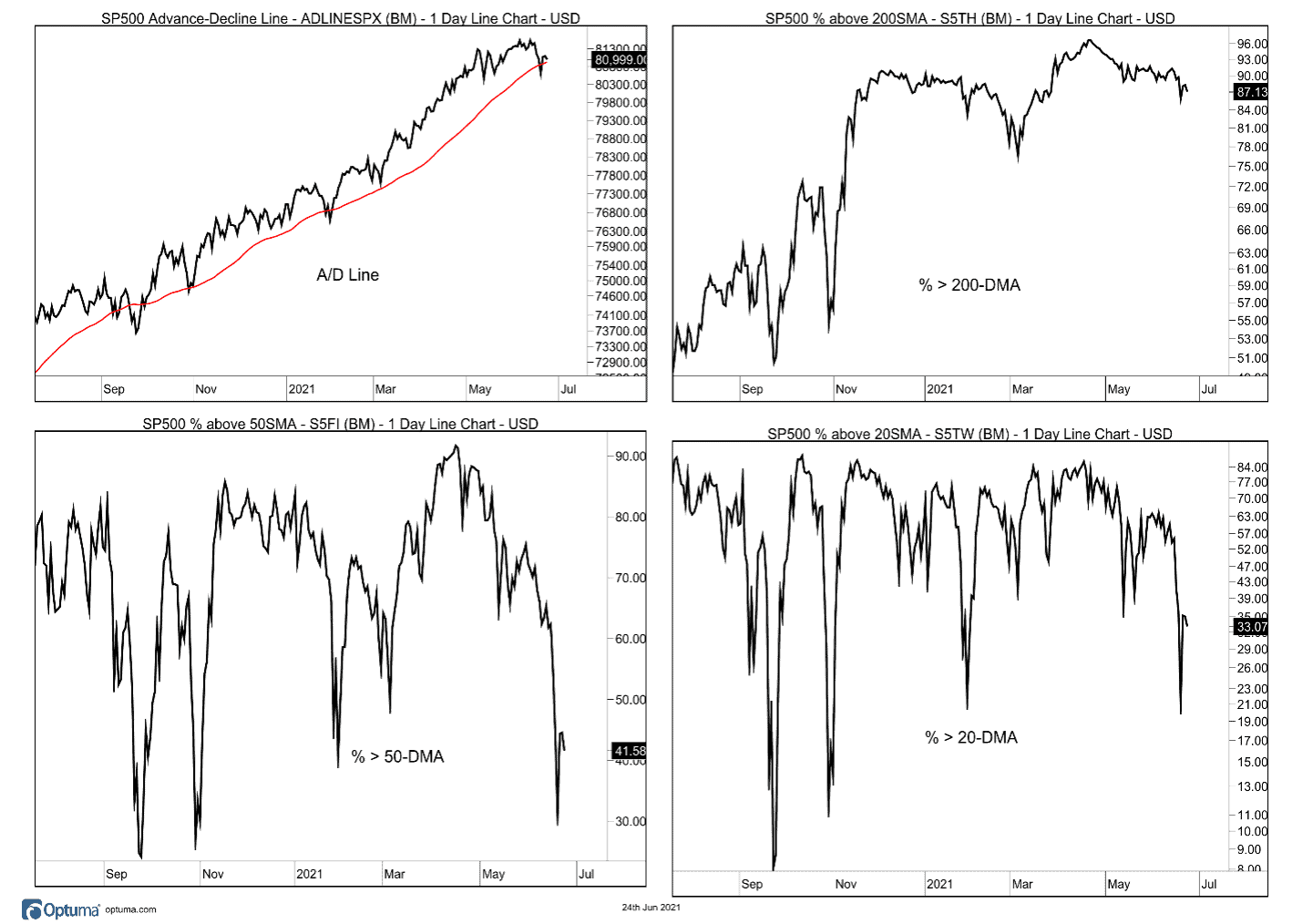
Small Cap Breadth
Small Cap breadth is similar to what is seen for the S&P 500. The A/D Line has declined from recent highs but continues to find support at the rising 50-day moving average. The long-term metric remains healthy but down from the highs. The intermediate and short-term measures have seen greater deterioration.
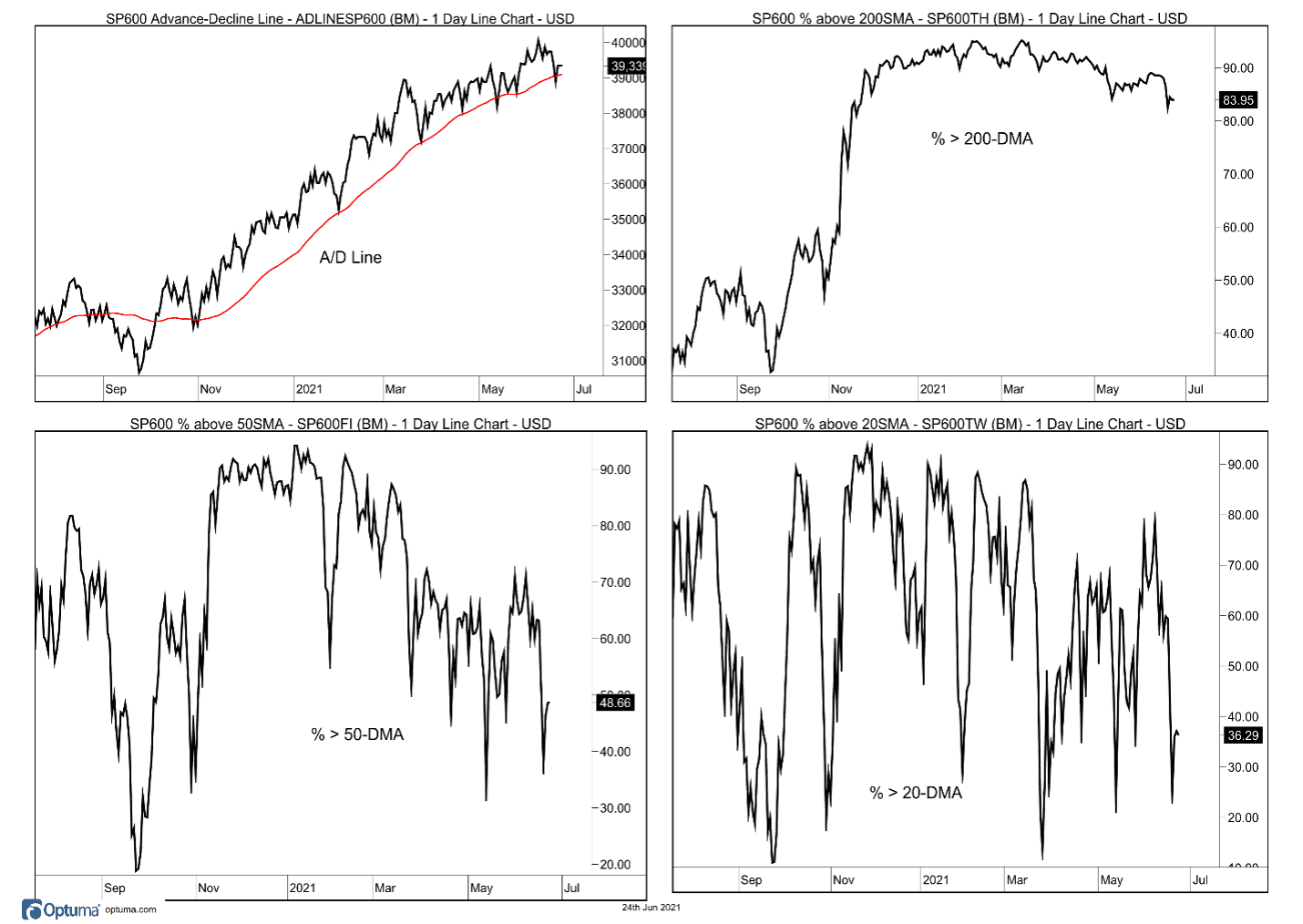
Take-Aways
Across the major U.S. markets, breadth continued to weaken over the past week. This lack of confirmation is arguably the strongest part of the bear case for equities right now. We are watching these divergences closely and have identified the key levels that would signal that the trend has turned down.
